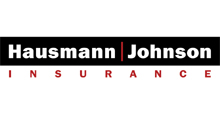By Liz Pond, Senior Communications Specialist

Believe it or not, we’re halfway through 2019! The mid-year point is a great time to reassess your communications strategy to ensure your employees are understanding and making the most of their benefits. If you don’t currently have a strategy, it’s never too late to start thinking about how you can more effectively communicate to your employees.
Below are 5 tips to help you optimize your employee communications strategy:
1. Focus on employee experience
Employee experience is a hot topic in the HR and benefits world. It refers to what an employee encounters and feels (or “experiences”) during their time at the organization, from hiring and onboarding through the end of their employment. Employee experience can have an impact on engagement and performance, as well as on retention and recruitment. If you haven’t already, you can expect to see an increased focus on employee experience as part of your organization’s communications strategy.
How can you incorporate employee experience into your communications plan? Depending on the quality, content and timing of the messages they receive, employee communications can have either a positive or a negative impact on employee experience. When developing communications, take time to dig deeper and think about what your employees really want to hear and what will help them the most at each stage in their employment (i.e., recruitment, onboarding, training and exit).
Which brings us to our next tip…
2. Always be listening
Organizations looking to create a positive employee experience are focusing more and more on “continuous listening” when developing employee communications. Continuous listening is achieved when an organization solicits feedback, both formally and informally, throughout the year and during the stages of employment. Examples of this include pre-employment or post-onboarding surveys to understand the employee’s experience with joining your organization. During the year, an annual survey, pulse surveys (quick 1 or 2 question surveys to gauge current employee engagement), focus groups and performance check-ins are great ways to hear what your employees have to say.
Continuous listening can play a key role in developing an employee communications strategy. You can use the feedback received from your employees to determine what topics they’re interested in and the messages they want to receive. You may even want to get feedback on the frequency and type of communications your employees prefer so you can tailor that to their needs (i.e., monthly emails vs. quarterly printed newsletters).
Continuous listening doesn’t have to be an expensive initiative. Free survey tools, such as
SurveyMonkey, are available online and are a quick way to get feedback from employees. Quarterly check-ins between managers and employees are also a no-cost way to hear what employees have to say.
3. Segment your messages
When it comes to employee communications, one size does
not fit all. Messages that are tailored to employees’ wants and needs will be more impactful than generic ones. Take a look at your employee population to determine how to segment your messages – you may want to divvy up communications by demographic groups, work locations, or job functions. You may also decide to segment your employees by life stage or employment stage. If you’ve been using continuous listening, you should have an idea of how to segment your employees as well as what these groups want from their communications, which will be invaluable as you develop your communications strategy.
4. Take advantage of peer-to-peer communications
Your employees have told you what they need to know – why not have them help you share your messages as well? Top-down messages from the executive team may work well for announcing major changes, but if you’re trying to convince employees that enrolling in a High Deductible Health Plan is the best move for them, having a fellow employee share their story can be more effective than an email from an executive. Get to know your “internal influencers” by soliciting their feedback and taking advantage of their connections within the workplace – gain their buy-in and they’ll help you spread your messages more effectively.
5. Create “consumer-grade” communications
More and more frequently, the consumer world is being reflected in the corporate world. The way we experience communications in our personal lives is becoming the expectation for how we experience them in our work lives. Internal communications need to mirror a “consumer-grade” quality and experience if you want them to be successful. You can achieve this quality by creating communications that are visually rich and interactive. If you have a marketing team, leverage their strengths to build communications that use high-quality visuals and engaging language. Many companies have their own benefits “brand,” which includes a benefits logo, tagline and color palette, so employees can easily identify benefits communications. If you don’t have access to a marketing team, websites such as
Canva.com provide design templates that you can quickly customize with your own message.
Interested in learning more about actionable ways to improve your employee communications? Attend Liz’s webinar, “How to Develop Open Enrollment Communications Like a Marketing Pro,” on Thursday, July 18 from 9:00-10:00 am CST.
Click here to learn more and register today.
